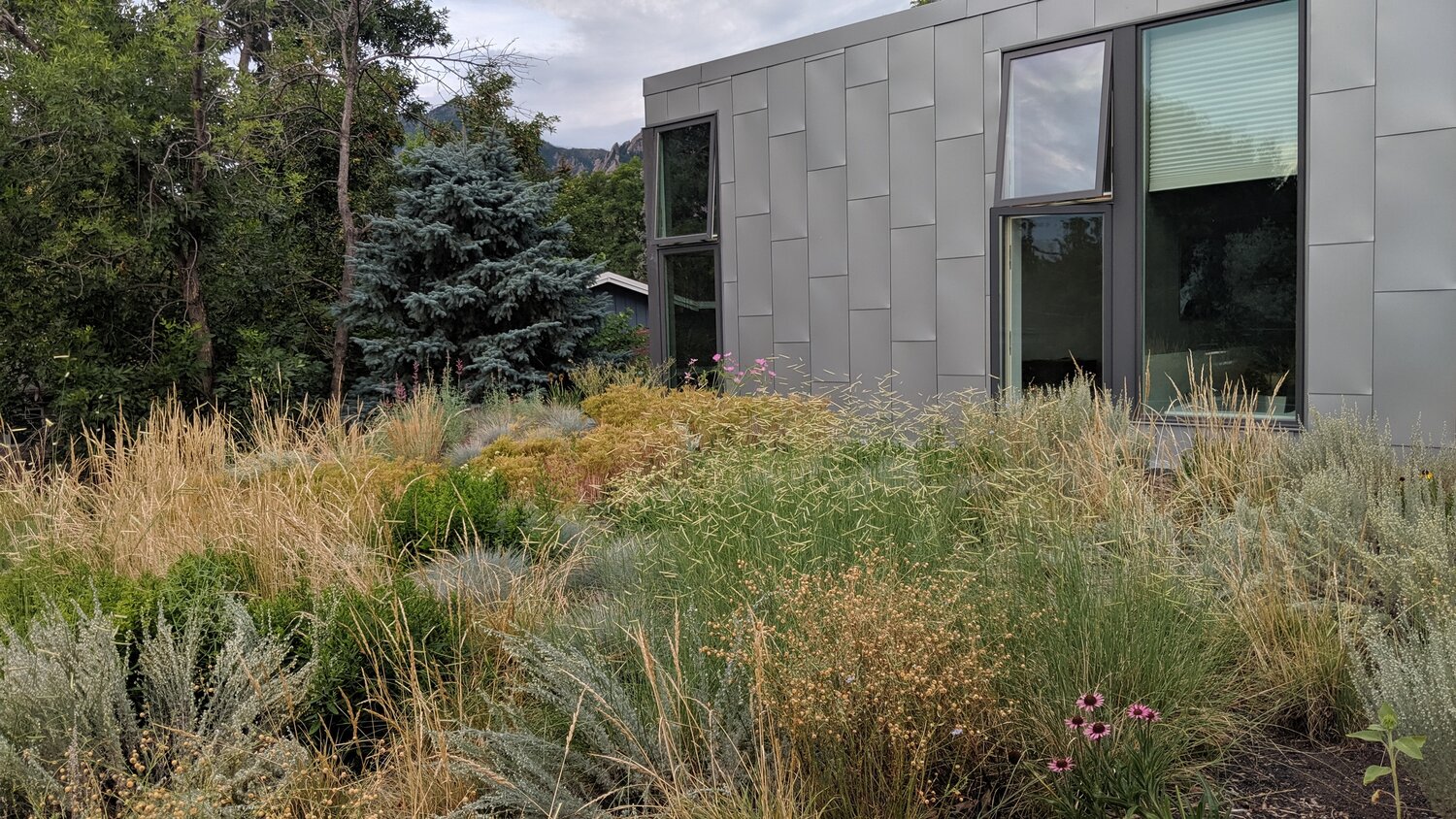The world just celebrated the very first Green Roof Day, begging the question: Are sod roofs still worth the time and the money to install one on your roof?
A collaboration between livingroofs.org and the European Federation of Green Roof Associations, the day “was a celebration of green roofs all over the world and the many benefits they bring to people and nature.” The group hopes the celebration will be even bigger next year.
[ Related: DARK EXTERIOR MATERIALS TELL THE STORY OF THIS HOME'S PAST ]
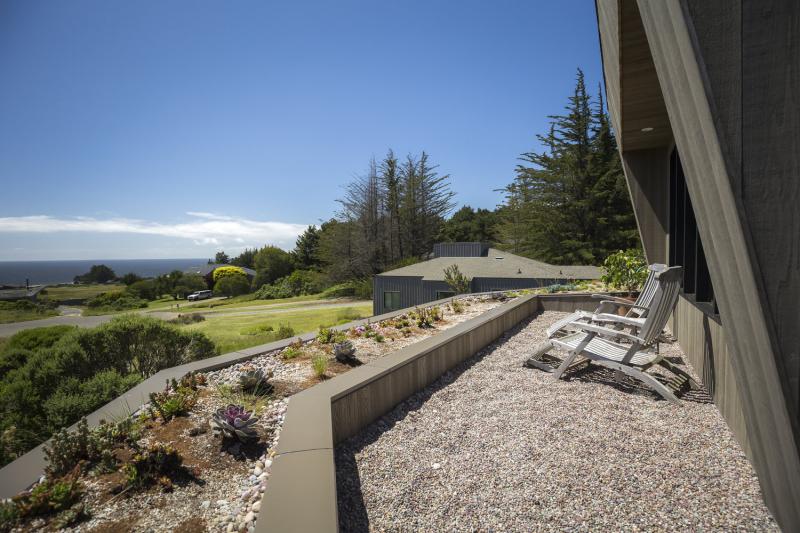
A 2017 Award of Excellence, the Hedgegate House by AE Design features a green roof of native plants. The rainwater/stormwater from the roof, retaining wall, rain room, and driveway, is collected for irrigation of the living roof and graywater is collected for irrigation of the ground landscaping. Photo: Courtesy Green Roofs for Healthy Cities
What Exactly is a Green or Sod Roof?
A green roof is exactly what is sounds like: a roof system that consists of soil or growing medium and vegetation of various types, including sedums, grass, or flowers. The systems have been steadily growing in municipalities around North America for years. Green Roofs for Healthy Cities (GRHC), a Toronto, Ontario–based industry group that promotes the category, says the green roofing industry has seen steady increases since 2004 (the year the group began keeping score), even though it has had some down years in 2014 and 2018.
“In 2019, 14 respondents recorded 763 projects in 35 US states and three Canadian provinces across North America, installing 3,112,818 square feet of green roofing,” the group says in its yearly report. “While this represents a decrease from data reported from 2017, particularly impacted by a limited sample size of the Canadian market, long range analysis continues to indicate an estimated 5 to 15 percent overall industry growth trend since 2013, although this is a conservative estimate....”
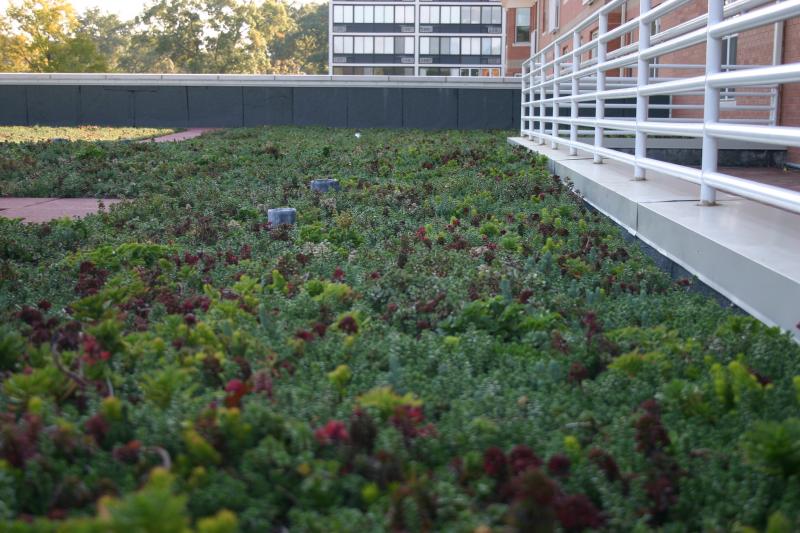
The Two Old Mill mixed-use condominium building by Janet Rosenberg & Studio is surrounded by abundant green spaces, and bringing the feel of these surroundings to the building in a sustainable manner was the main goal of the project. It received an Awards of Excellence in 2018. Photo: Courtesy Green Roofs for Healthy Cities
“Long a proven technology in Europe, green roofs are becoming increasingly common in U.S. cities, with major initiatives in Chicago, Portland, and Washington, D.C.,” Yale University’s School of Forestry & Environmental Studies wrote in 2010. “While initially more expensive than standard coverings, green roofs offer some major environmental — and economic — benefits.”
To hear advocates tell it, green roofs are like magic elixir for the environment as well as houses and commercial buildings. First, green roofs help the environment by managing stormwater, cleaning the air and water, and helping to reduce the heat island effect in urban areas. The Yale School of Forestry & Environmental Studies says once the roof has been established, the plants provide their own nutrients and, in more polluted areas, even utilize nitrogen in the city air for growth.
[ Related: CAN ONE ROOF TILE DO IT ALL? ]
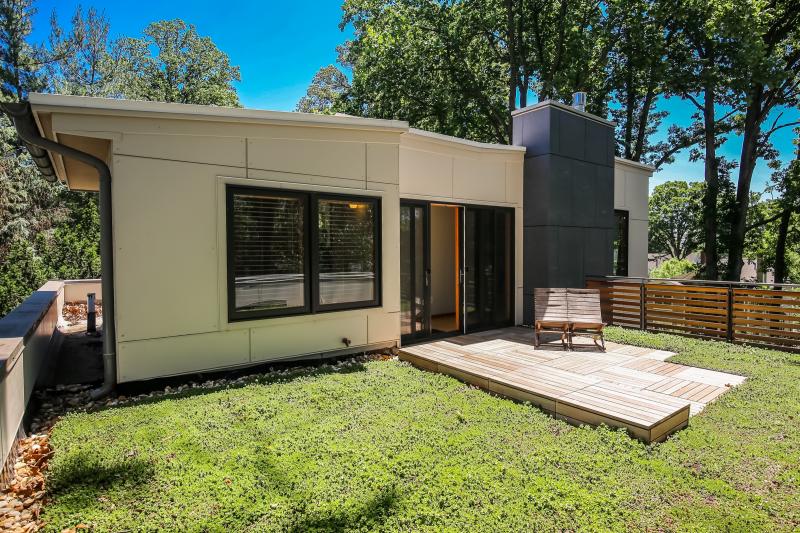
This Arlington, Va., residence by Galaxy Homes is a high-performance custom home that has a green roof that owner uses as an outdoor area. Photo: Marlon Crutchfield Photography
“Green roofs also reduce the amount of pollutants in the storm water that does run off and provide habitat for birds,” the university says on its site. “Cities struggling with already burdened storm water treatment plants—which means most cities—would welcome the millions, even billions, of gallons of water that green roofs might retain. The roofs could also dissipate the effects of summer temperatures where dense development has created intense heat islands.”
No wonder so many North American cities are embracing the system by adopting ordinances to promote green roof installations. In 2018, the top 10 cities for sod roof installations (mostly on commercial and civic buildings) include Washington, Chicago, New York, Boston, Philadelphia, and South Bend, Indiana.
[ Related: 3 WAYS YOUR ROOFS CAN WORK HARDER FOR THE ENVIRONMENT ]
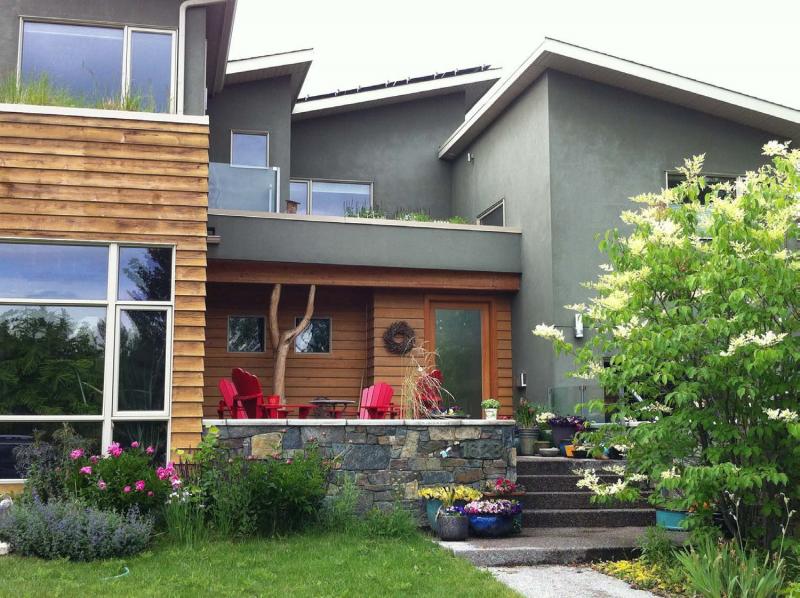
Altadore Eco House by Studio T Design won a 2018 award from Green Roofs for Healthy Cities. The loose-laid green roofs are located adjacent to private living spaces, creating opportunities to bring nature closer to sleeping areas. Photo: Courtesy Green Roofs for Healthy Cities
Green roofs are showing up in residential work, too. The same benefits for a commercial apply to a house as well, including keeping the house cool and reducing the need for air conditioning. The industry says the roofs also offers some noise reduction properties. But depending on the type of installation, they can be a place for homeowners to spend some time.
Green roofs fall into two categories: a lightweight “extensive” system that consists of about 6 inches or less of growing medium and an “intensive” system, which has more than 6 inches. The extensive roof requires less maintenance, GRHC says, but it also supports less plant diversity. Intensive roofs supports a wider range of plants and trees and can be used as an outdoor space.
So how much does a green roof costs? It depends.
“The cost of a green roof varies considerably depending on the type and factors such as the depth of growing medium, selected plants, size of installation, use of irrigation, and whether they are to be accessible on inaccessible—inintensive, semi-intensive, or extensive,” GRHC says. “Intensive green roofs typically require greater investment but confer the benefits of accessibility. An installed extensive green roof with root repellent/waterproof membranes may be installed for $10 to $24 per square foot. While green roofs typically require a greater initial investment, it is important to keep in mind that they can extend the life of the roof membrane and reduce the heating and cooling costs of your building.”
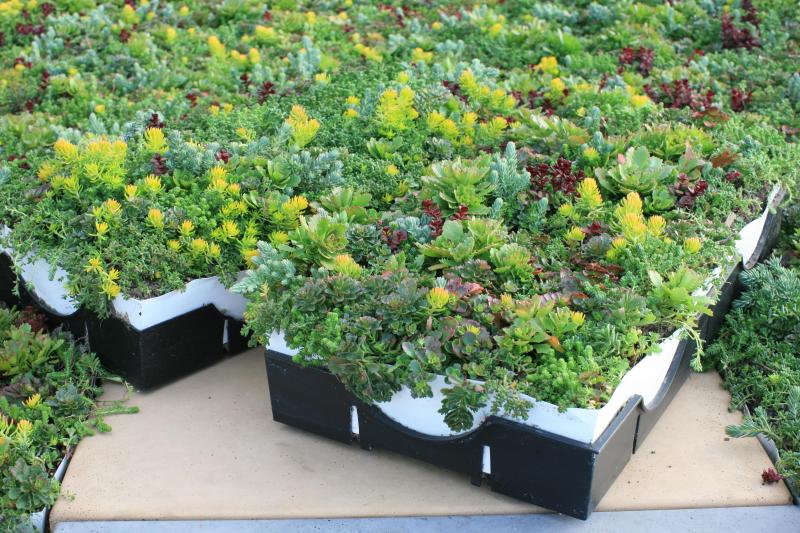
Instead of a full-blown intensive roof system, Liveroof offers modular systems consisting of modules that disappear under the cover of soil and plants. Each tray can be removed for roof repairs, too.
